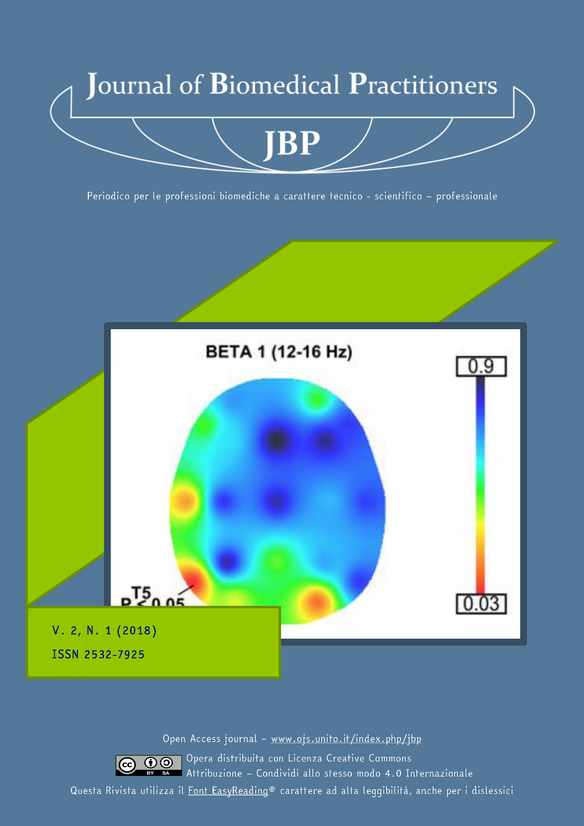Misure elettrofisiologiche dell’efficacia della riabilitazione attraverso neurofeedback in una popolazione afasica
Contenuto principale dell'articolo
Abstract
Obiettivo. Il seguente studio si propone la valutazione di un protocollo clinico di neurofeedback di 20 sedute su pazienti affetti da afasia attraverso una misurazione quantitativa delle frequenze cerebrali (qEEG) effettuata all’inizio ed alla fine del trattamento e confrontando il risultato tra tre gruppi di pazienti: un gruppo sperimentale che ha effettuato vere sedute di neurofeedback, un gruppo placebo ed un gruppo di storia naturale.
Materiali e metodi. 30 pazienti sono stati divisi in modo casuale in tre gruppi (N = 10): un gruppo sperimentale che ha seguito vere sessioni di neurofeedback (Neurofeedback Verum, NFV), un gruppo placebo che ha effettuato sessioni di finto neurofeedback osservando un video registrato (Neurofeedback Placebo, NFP) ed un gruppo di storia naturale che non ha seguito alcun tipo di neurofeedback (Natural History, NH). Le sessioni di neurofeedback, della durata di 20 minuti e della frequenza di due volte a settimana, sono state impostate sull’aumento delle frequenze alpha (8-12 Hz) e beta (12-20 Hz). Tutti i pazienti sono stati testati, attraverso il qEEG, prima dell’inizio della terapia (TEST) e subito dopo la sua conclusione (RETEST).
Risultati. Nel solo gruppo NFV è stato osservato un aumento delle frequenze beta 1 (12-20 Hz) sulla derivazione T5 e della frequenza beta 2 (16-20 Hz) sulla derivazione T3. Negli restanti due gruppi di controllo, placebo (NFP) e storia naturale (NH), non è stato rilevato alcun cambiamento a livello del qEEg.
Discussioni. L’aumento nelle frequenze beta 1 e beta 2 a livello del lobo temporale sinistro ottenuto nel solo gruppo sperimentale NFV indica una possibile influenza del trattamento sulle aree danneggiate dallo stroke nei pazienti afasici: è stato dimostrato come il ritmo beta, soprattutto beta 2 sia legato al livello attentivo-cognitivo cerebrale, nonché dell’elaborazione del linguaggio e come questa banda di frequenza sia una misura del danno cerebrale nei pazienti afasici, dove risulta deficitaria soprattutto a livello centrale e posteriore dell’emisfero sinistro (includendo dunque le derivazioni temporali).
Conclusioni. Nonostante Il neurofeedback venga usato nel trattamento di diversi disturbi neuropsichiatrici non sono ancora presenti studi sistematici, in particolare nei disturbi afasici.
Il presente studio rappresenta il primo tentativo di standardizzare un protocollo terapeutico di neurofeedback e confrontare risultati oggettivi ottenuti attraverso il qEEG tra un gruppo sperimentale ed un gruppo placebo.
Downloads
Dettagli dell'articolo
Gli autori mantengono i diritti sulla loro opera e cedono alla rivista il diritto di prima pubblicazione dell'opera, contemporaneamente licenziata sotto una Licenza Creative Commons - Attribuzione che permette ad altri di condividere l'opera indicando la paternità intellettuale e la prima pubblicazione su questa rivista.

